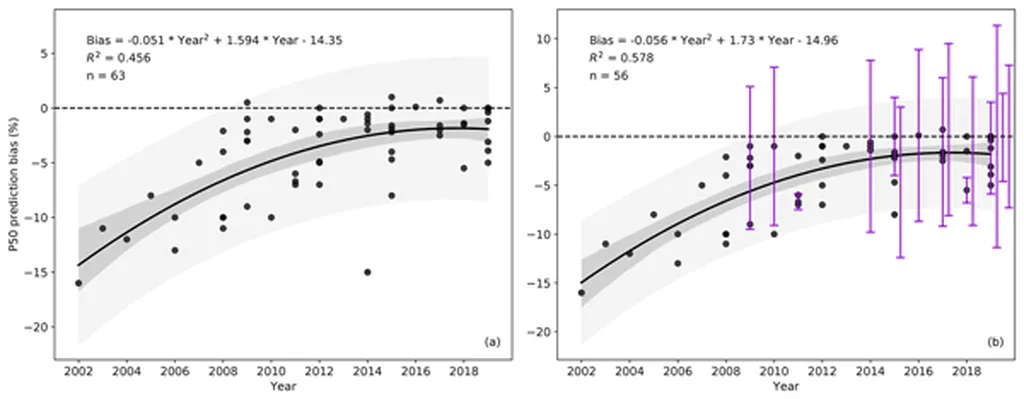In the ever-evolving landscape of wind energy, precision in predicting a wind farm’s energy output is crucial for investors, developers, and operators. A recent study published in the journal Wind Energy (translated as “Wind Energy” in English) sheds light on the discrepancies between pre-construction energy yield assessments (EYA) and actual operational performance, with a particular focus on wake losses. Eric Simley, a researcher at the National Wind Technology Center, part of the National Renewable Energy Laboratory in Golden, Colorado, led this insightful investigation.
Wake losses, caused by the interference of wind turbines with each other’s airflow, are a significant factor in energy yield assessments. Simley and his team compared pre-construction wake loss estimates from six wind energy consultants with operational data from five land-based wind plants across North America. The findings reveal a mixed bag of accuracy and overestimation, with potential implications for the commercial viability of wind projects.
The study found that operational wake losses ranged from 1.9% to 6.4%, with an average of 4%. For one project, located in relatively simple terrain and isolated from neighboring plants, the mean EYA wake loss estimate was remarkably close to the operational value, differing by just 0.7 percentage points. However, for most other projects, wake losses were overpredicted by 2.6 to 6.3 percentage points. This overestimation could lead to conservative energy yield predictions, potentially impacting the financial attractiveness of wind projects.
Simley noted, “While the overall bias between pre-construction estimates and operational production is improving, uncertainty remains high for individual wind plants.” This uncertainty can pose challenges for investors and developers who rely on accurate energy yield assessments to evaluate the commercial potential of wind projects.
The study also highlighted that operational wake losses might be underestimated for many projects due to factors such as spatial wind resource variations, external wake effects, and wind plant blockage effects. By investigating operational wake losses as a function of wind direction and speed, the researchers found that wake losses are generally concentrated near wind directions aligned with rows of closely spaced turbines and at below-rated wind speeds. Intriguingly, for some projects, the energy produced exceeded the estimated potential energy without wake interactions for certain wind directions and wind speeds, suggesting inaccuracies in the wake loss estimation methods used.
Simley emphasized, “Even when overall wake losses are predicted accurately, large uncertainty exists at the turbine level.” This finding underscores the need for more precise and sophisticated models to better capture the complexities of wake losses at an individual turbine level.
The implications of this research are significant for the wind energy sector. As the industry continues to grow and evolve, accurate energy yield assessments are vital for ensuring the financial viability and competitiveness of wind projects. The findings from Simley’s study could drive advancements in wake loss modeling and estimation techniques, ultimately leading to more reliable and precise energy yield assessments.
In the quest for cleaner and more sustainable energy sources, wind power plays a pivotal role. By improving the accuracy of energy yield assessments, the industry can attract more investment, optimize project performance, and contribute to a greener future. As Simley’s research demonstrates, there is still much to learn and refine in the field of wind energy, but each step forward brings us closer to harnessing the full potential of this renewable resource.

